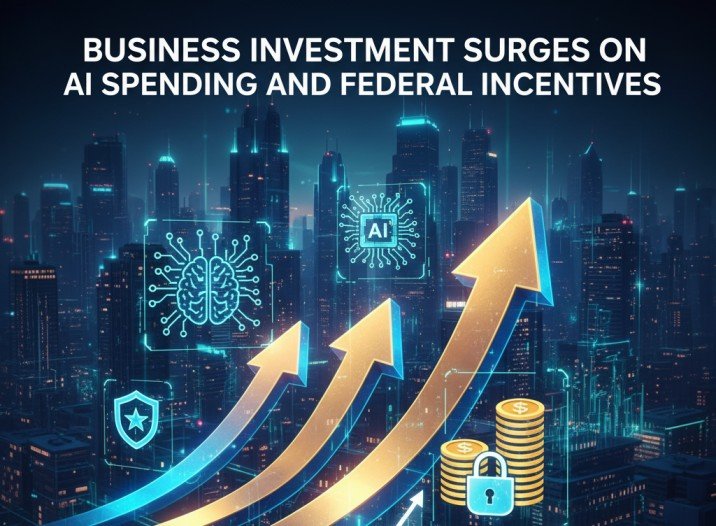NEW YORK, July 23 (Reuters) – U.S. business investment gained momentum in the second quarter as companies accelerated spending on artificial intelligence (AI) and took advantage of newly enacted federal tax incentives, analysts said on Wednesday.
“Corporate America is in the midst of an AI-driven capital expenditure boom,” said Carlos Nguyen, head of U.S. equity strategy at Meridian Capital. “We’re seeing data-center expansions and semiconductor investments at levels not seen since the late 1990s tech build-out.”
According to industry estimates, AI-related capex contributed more than one-third of annualized U.S. GDP growth in Q2, with spending on data centers, specialized chips and power infrastructure quadrupling since 2020. Major cloud providers, including Amazon Web Services and Microsoft Azure, announced multibillion-dollar projects in Virginia, Ohio and Texas, aiming to support burgeoning demand for generative AI services.
The investment landscape received an additional boost from the “One Big, Beautiful Bill,” signed into law late last month. Key provisions allow 100% bonus depreciation on qualified production property, effectively enabling companies to write off the full cost of new factories, machinery and semiconductor tools in the year they are placed in service. Enhanced R&D tax credits and boosted semiconductor production credits of up to 35% are expected to further lower after-tax costs for tech giants and mid-market manufacturers alike.
“Those incentives are a game changer,” said Lori Chen, senior tax partner at Brightwell & Co. “We’re already advising clients to accelerate planned purchases into Q3 to maximize the benefit.”
Venture capital activity also remained robust, with U.S. startups raising $163 billion in the first half of 2025—up nearly 76% year-over-year—driven largely by early-stage AI and robotics ventures, according to PitchBook data. Despite the funding surge, exit activity via IPOs and mergers has lagged, leading some limited partners to caution on valuation stretches.
M&A dynamics painted a mixed picture: deal volume dipped 8% in Q2 compared with a year ago, but total deal value climbed 12%, buoyed by several blockbuster transactions in the industrials and healthcare sectors. Private equity firms continued to pursue larger platform acquisitions over smaller add-on deals, reflecting a broader industry trend toward scale and operational resilience.
Market reaction has been broadly positive. The S&P 500 closed up 0.7% on Wednesday, driven by gains in the technology and materials sectors. However, rising Treasury yields—10-year notes reached 4.1% this week—have prompted some investors to reallocate from long-duration assets into short-term debt and dividend-paying equities.
Looking ahead, economists expect overall business investment growth to moderate in H2 as companies digest the wave of incentives and weigh slower global growth. Still, many executives remain upbeat that strategic investments in AI, advanced manufacturing and clean energy will underpin long-term productivity gains.
“Today’s investments won’t just power the next wave of tech innovation,” said Nguyen. “They’ll help reshape where and how U.S. goods are made.”









